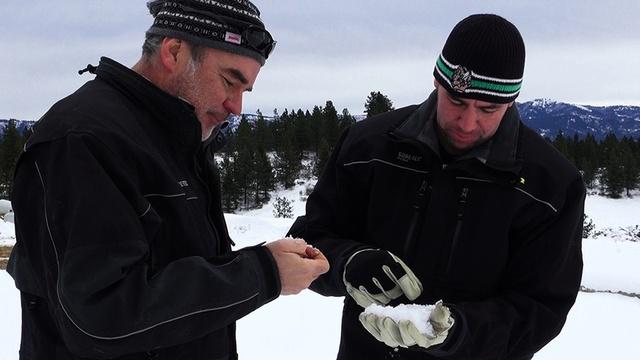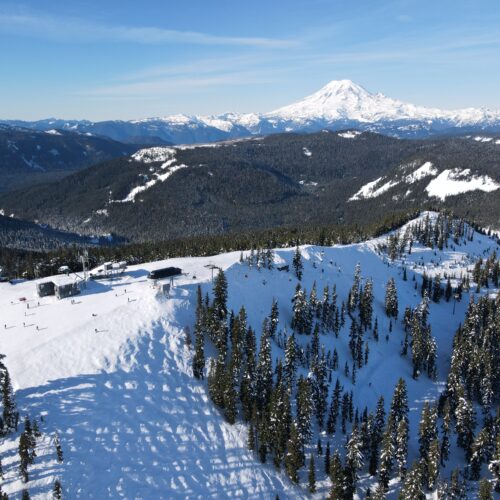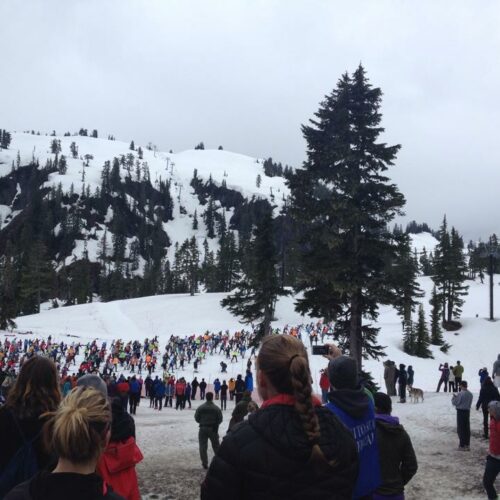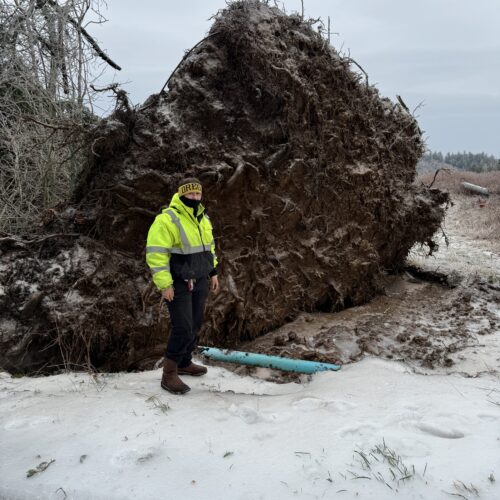
How Cloud Seeding May Alleviate Northwest Drought
Scientists are one step closer to making more snow fall during winter storms. The controversial process is called cloud seeding. There’s now evidence that it is actually working.
Cloud seeding isn’t a new idea — in fact, experiments to increase snow production in storms have been studied since the 1940s. But the technology has been pretty limited. Scientists weren’t able to figure out if their efforts were paying off.
Until now.
Researchers used instruments that measured microscopic particles as they flew up to 200 miles per hour through stormy clouds over southwestern Idaho.
Jeff French, with the University of Wyoming and the study’s lead researcher, said, as the plane swooped through sometimes dangerously icy conditions, crystal clear data immediately streamed in.
“We were able to make the first observations that showed what happens in a cloud,” French said.
The cloud seeding was making the snowfall heavier.

View from the cockpit of the King Air during a research flight over the Payette Mountains. Jeff French
Cloud seeding is the theory that you can increase the amount of precipitation a storm produces. For this project, researchers used a plane to release a material called silver iodide into clouds. The particles attract water droplets and freeze to help produce more snow or rain in the storm.
But long unanswered question of whether cloud seeding actually works meant funding to further study the technology had all but dried up, French said. This study, published in the journal Proceedings of the National Academy of Sciences, was funded by the National Science Foundation and supported by the Idaho Power Company, which one day hopes to provide additional water supply for hydropower through cloud seeding.
Idaho Power has been seeding clouds since 2003 in the Payette Basin, just north of Boise. Until now, they’ve used computer modeling and ground measurements to figure out if their efforts worked.
Derek Blestrud, a meteorologist with Idaho Power, said they’ve seen a 14 percent increase in snowpack in the basin. This most recent study confirms that the company’s cloud seeding works.
“It’s never before seen stuff — when you can actually see the bands of precipitation form after the cloud seeding aircraft went through (the cloud),” Blestrud said.
Blestrud said cloud seeding will never put an end to a drought, but it could help during low snow years.
“That could be a make or break for irrigators. It could help keep electric rates down. It could do all sorts of stuff,” Blestrud said.
Next, researchers can move on to what Jeff French calls the ultimate question.
“In the long-term, we will be able to answer questions about how effective cloud seeding is, and what conditions may be needed,” French said. “Water managers and state and federal agencies can make decisions about whether cloud seeding is a viable option to add additional water to supplies from snowpack in the mountains.”
Copyright 2018 Earthfix
Related Stories:

As Northwest snowpack grows, ski resorts open early
A drone photo shows White Pass Ski Area in Naches, Washington, on Dec. 1, 2024. (Credit: Andy Mahre / White Pass Ski Area) Listen (Runtime 1:00) Read Fresh white powder

Nerves slippery for Washington’s Ski to Sea race
Cross country skiers line up at the start of the 2014 Ski to Sea race. (Credit: Courtney Flatt / Northwest News Network) Listen (Runtime 1:04) Read Snow-covered undulating trails will

Winter storms mean turn-of-the-century times for many in Corbett, Oregon and others around the Northwest
Listen (Runtime :59) Read When you think your weather’s been bad in the Northwest, think of the residents of Corbett, Oregon. John Jordan lives there, on the blustery cusp of















